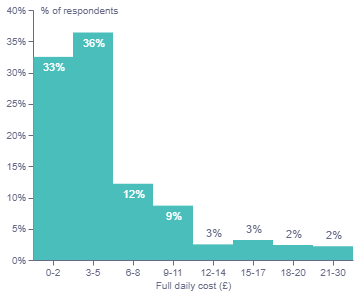

In the past two years, the number of UK Space sector roles has increased by 6.7%, with over 3000 jobs created in one year, despite the impact of the pandemic.
The updated UK Space Agency report showed that employment in the UK Space Sector hit 46,995 in 2020, from 44,020 in 2019.
There was a large amount of funding given by the UK government in the last two years to the space sector.
This, coupled with the increased number of start-ups, allows for a greater level of flexibility in remote working, as previously entrenched HR and operations policies for well-established companies with on-site working is no longer as large a barrier.
So, what are the pros and cons of the hybrid working model?

This is for all the HR and Hiring Managers: if you adopt a hybrid working model, feedback from our candidates has shown that people are more willing to commute further if it is less regular.
With over 60% of commuters choosing to travel by car, it is a cost-saving in terms of expensed fuel receipts for the employer, and travel costs for the employee.
The average daily cost of commuting was found to be up to £11 per day in a study from the Economic Observatory (see figure below).

Source: www.economicsobservatory.com
With working focus switching to output, rather than the Victorian view of time as output, hybrid working has never been more popular.
You can now travel to the office on less days and spend the extra time you would have otherwise lost in commuting to relax, or complete domestic tasks.
However, no model of working will likely be perfect for both parties.

This is potentially the most talked-about issue with working from home or the hybrid working model.
Typically, the company will place the lesser experienced personnel around those who have greater knowledge and expertise.
The cost of a remote approach to working is the loss of the close interaction with those experienced members of the team, ultimately leading to a shortfall in the quick answers and tutorials provided by being in close proximity.
Furthermore, these experts will lose productivity by having to arrange Teams or Zoom calls with the lesser experienced employees.
With remote working becoming unilaterally adopted across the country during the pandemic, there was a reported increase in the effects it had on mental health.
A report by the Harvard Business Review determined that a large percentage of the population received a majority of their socialising from working within the office.
Furthermore, it has come to light that since the pandemic, the mental health of millions of workers has been affected by the lack of socialising, with 9 out of 10 people reporting that loneliness has made their mental health worse during the pandemic.
KDC Resource advises their clients to ensure that if they are adopting a hybrid working model, to include team building days in their schedule.
Furthermore, we advise both clients and candidates of areas where their team can spend ‘out of home’ remote work, such as co-working spaces.
Get in touch today if you want advice as either an employer or employee on how to get the most out of the hybrid working model.
